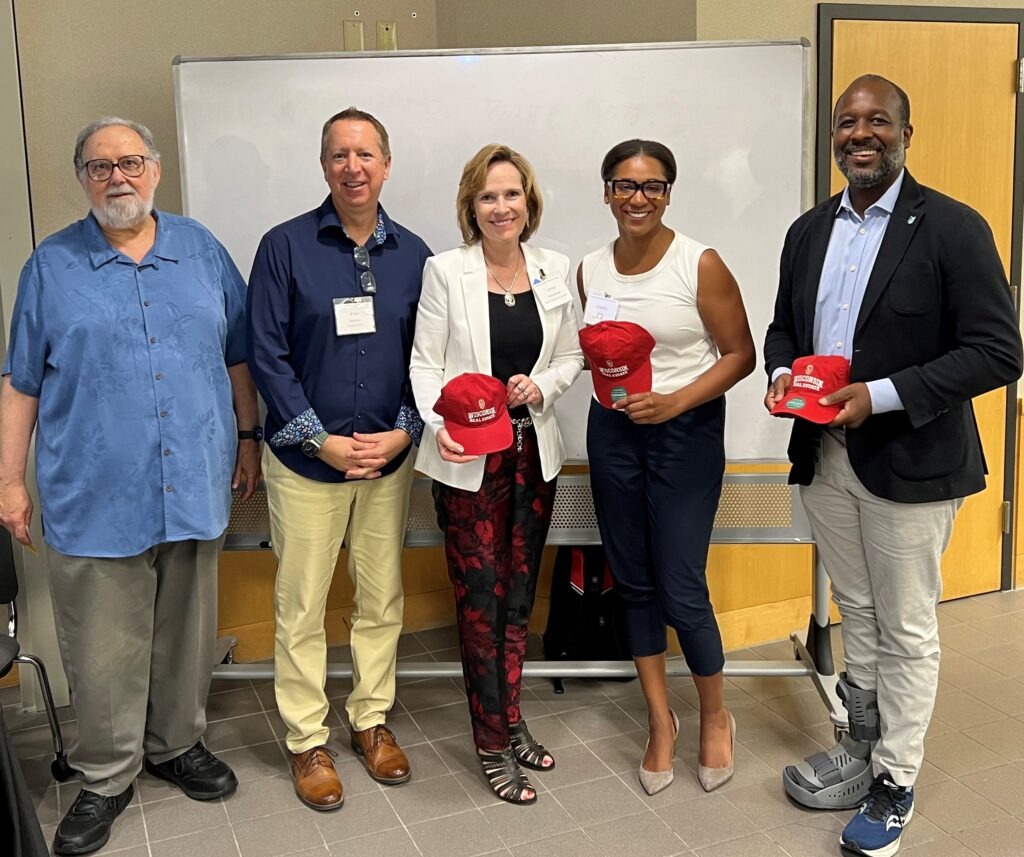On June 4th and 5th, the Wisconsin Real Estate Program hosted the Housing Sustainability and Affordability Conference in Grainger Hall on the UW-Madison campus. Top scholars from around the world presented their academic research papers on a wide range of affordability-related topics. To cap the first day of the meeting, Conference co-organizers Lu Han and Chris Timmins organized a complementary panel of high-level practitioners to provide their perspectives on problems, solutions, and research questions.
The discussion was kicked off by panel chair Steve Malpezzi, Emeritus Professor from the Graaskamp Center, who set the table with a few alternative definitions of “affordability:”
- Sometimes, what people are willing to pay.
- Sometimes, what people ought to pay.
- Sometimes, housing units that rent or sell for moderate amounts (e.g. rents less than 30 percent of income, or houses selling for less than $100,000).
- Sometimes, housing units in particular housing programs (e.g. public housing or Section 42 LIHTC units).
- Sometimes, housing units utilized by particular kinds of households (e.g. very low income).
Malpezzi followed up the definitions with a few basic facts about alternative affordability measures across the U.S. and over time, and a few trends on housing policy approaches on supply and demand sides, including regulatory challenges, and the role of vouchers.

Elmer Moore, Director, Wisconsin Housing & Economic Development Authority then gave an overview of WHEDA’s four complementary strategic elements: economic development lending, multifamily and single-family finance, and operationalizing federal and state multi-family housing tax credit programs.
Panelists (R to L): Stephen Malpezzi, Brian Swanton, Lorrie Heinnemann, Joanna Mack and Elmer Moore.
Elmer laid out some of the challenges facing Wisconsin residents, including significant issues of affordability not only in some expected areas like relatively high-cost urban areas (Dane and Milwaukee counties) but also some lower-cost less-urbanized counties like Marathon, Ashland, or Grant. This highlighted the fact that affordability is about incomes as well as housing costs.
Brian Swanton, President and CEO, Gorman & Company reviewed his firm’s approach as a for-profit real estate developer focused on affordable housing, rooted in Wisconsin but active in a dozen states across the country. Brian explained the different tiers of housing markets – low-income, workforce, and market rate – and also emphasized how good housing contributes to better health and community stability. A case study of Gorman’s Edison-Eastlake development in Phoenix illustrated some of the principles.
Lorrie Heinemann, President & CEO, Madison Development Corporation focused on the problem of “missing middle” housing, that is, housing between high- and mid-rise apartments and condos at one end, and single-family housing at the other end. This “middle,” comprising duplexes and various forms of low-rise and courtyard apartments, townhomes, and the like, is often well suited and affordable to a wide range of households, including teachers, public safety workers among many others. Lorrie presented some project data that demonstrated the challenges such middle-market projects can face in the current financial and regulatory environment, and also some successful designs. Of particular interest to those with a Wisconsin Real Estate background were “The Graaskamp,” named for our famous predecessor, and “The Lillian,” named for his formidable mother.
Joanna Mack, Associate, Salazar Architect, Inc. discussed how housing design generates social, racial, and cultural impacts that extend far beyond individual buildings. An architect with a mainly West-coast practice in affordable housing, Joanna also demonstrated how some well-intentioned rule changes aimed at speeding up the development process for affordable housing projects could have unintended consequences, including lower design quality, “rinse-and-repeat building models” that may fly in the face of actual local needs and preferences, and creating roadblocks to the entry of new architects (or even established firms that have not specialized completely on the affordable space), reducing competition and innovation, and increasing costs.
A spirited half-hour discussion ensued among audience members and panelists, on a wide range of topics, including best practices and lessons learned, future research topics, and the role our racial history plays in our housing markets.